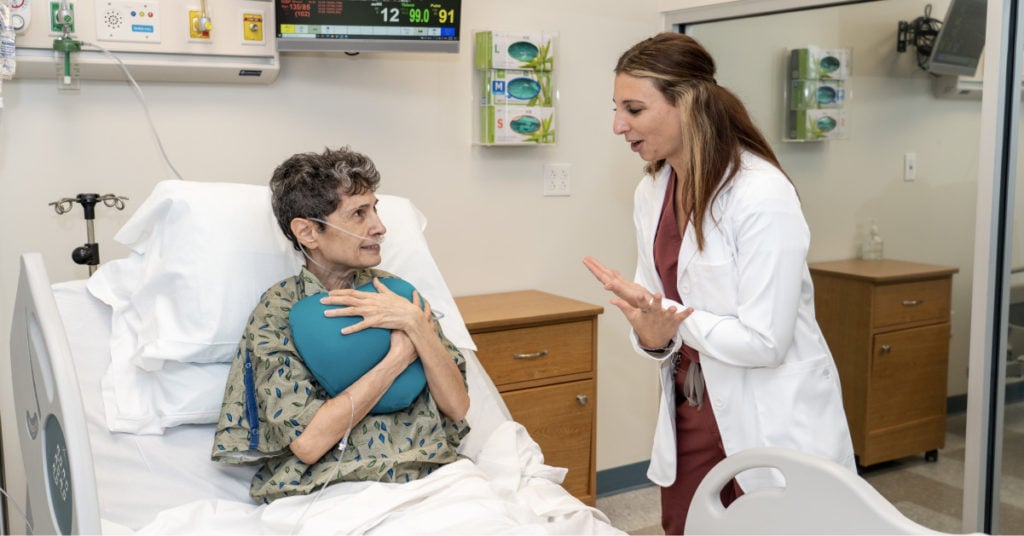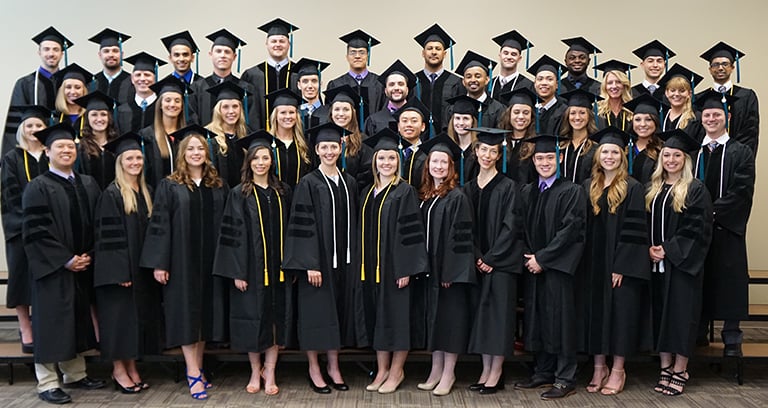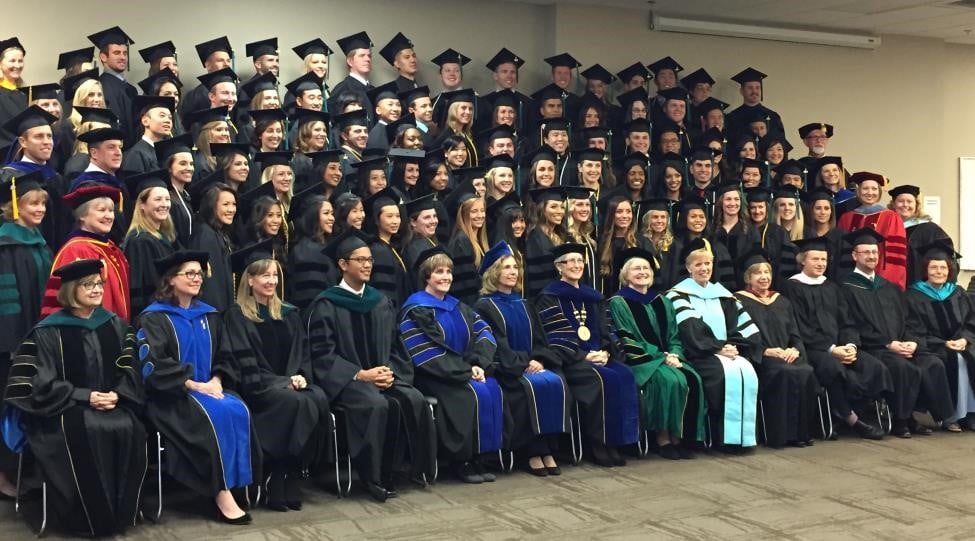As organizations across the nation respond to the COVID-19 pandemic by moving their workforce to a virtual environment, the sudden shift to working remotely could cause stress for some – especially when juggling work responsibilities with unprecedented demands on families that come with school closures. We asked the expert faculty at the University of St. Augustine for Health Sciences for advice on how to create an environment and routine poised for efficiency, success and stability. Here’s what they suggest.
Create a designated space for work: this should be a space that can be designated for work only, and not interfere with any other at home activity such as eating, sleeping or playing (from Dr. Erin Schwier).
- Postural awareness is key for the prevention of neck and back strains. Below is a visual representation of what employees should be striving for (from Dr. Derrick Campbell).

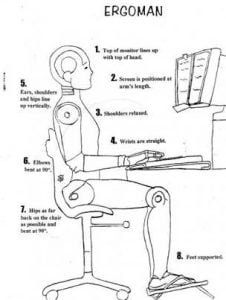
- Schedule daily mental stress breaks: Especially in trying times like now, people are worried and experiencing stress. Take some time to think about any worries/stress you may have and then flush it out of your mind. This time is your mental stress break time – block it off as if you are blocking off time (i.e. 15 minutes) in the day for an appointment and then release that stress. After the stress break is over, try and leave it behind you and not think about it again for the rest of the day (from Dr. Sunddip Aguilar).
- 20-20-20 Rule. Remember that your eyes keep working whether you are sitting or standing. To avoid eye strain, follow the 20-20-20 rule: Every 20 minutes, give your eyes a 20 second break by focusing on something at least 20 feet away (from Dr. Jennifer Crowder and Dr. Maureen Johnson).
- Workstation Comfort Tips (from Dr. Keith McWilliams)
- Low back discomfort – a rolled towel, cushion, small pillow, or thin rolled blanket will assist with low back support.
- Laptops are not an ergonomic dream – If you can connect to an alternate monitor and/or keyboard and mouse, do so. If not, change the height of the laptop depending upon the task. When reading, elevate your monitor to just below eye level. Do you need to type? Lower the laptop to a position where your elbows can be bent at a 90-degree angle.
- Device support – Place a binder, tray, or notebook between your laptop and legs if you are working from your lap. This will provide more stability and allow for air circulation to your device.
- Stick to a Routine (from Dr. Karen Snyder)
- Eat breakfast prior to sitting down in front of your computer. We tend to want to send an email out immediately, but then other emails catch your eye and its lunchtime already.
- Always sit down with fluids within reach but get up if you want a snack.
- Block out time for lunch breaks/set a timer—it is easy to forget to get up from your computer and change your scenery!
- Change positions. Move to different chairs to complete tasks, stand, take a walk while you are on a phone call.
- Set an “end of workday” time on your calendar and an alarm on your phone. It is too easy to keep working past your typical workday. It is ok to work longer hours sometimes, but not every day.
- Stay connected. Working remotely can be lonely, especially since all of us work in roles where we are socially interacting with each other and students daily. Not every interaction has to be a formal meeting, so set time aside on RingCentral (with cameras on!) just to talk, compare notes, catch up with colleagues, check in with students, and socialize. It’s also a great time to get to know other faculty and staff across the entire university. As we share more about ourselves via our home cameras and background settings, we can learn more about our colleagues and their families, make new friends, and create new connections (from Dr. Maria Puzziferro).
- Lumbar support. Put a lumbar pad on the back of your chair to assist with an upright posture, without neck hyper-extension. If you have a stand-up desk, please stand as much as possible (from Dr. Cherie Peters-Brinkerhoff).

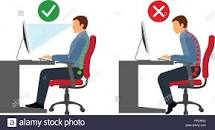
- Get Moving (from Dr. Tomas Eberle). Go for a walk outside for 20-30 minutes each day. This can improve Cardiovascular health, mood, and increases Vitamin D production (which can assist with asthma and respiratory infections). Further, it can reduce pain or stiffness perceived in muscles and joints.
- While seated, interlock your hands behind your neck and then bring your elbows up towards the ceiling to stretch your upper back. Repeat 15-20 times unless there is pain.
- Good lighting and positioning when keyboarding:Check lighting frequently when working from home. Avoid bright lights near windows which may cause excessive glare and low lights in bedrooms that may cause strain on the eyes. Select a keyboard with sharp contrasting colors on the keys to prevent squinting and excessive head flexion. Avoid resting forearms on hard surfaces of the desk which can lead to nerve compression injuries. Stretch frequently (from Dr. Terri Roberts).

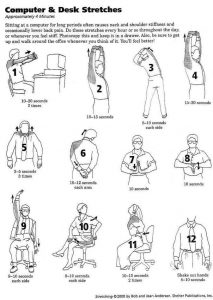
- Desk Ergonomics (from Dr. Deborah Ruediger)
- Make sure your monitor is at eye level
- Chair height is positioned so both feet touch the floor
- Adjust keyboard positioning, if able, to allow shoulders in a relaxed neutral position, elbows bent and supported on arm rests, and wrists in neutral
- When needed, use a plug-in full-sized keyboard to achieve a more optimal typing position.
Aside from work, it is also crucial to prioritize your physical and mental health during this time to avoid feelings of isolation. All USAHS employees have access to telehealth services through Healthiest You (www.healthiestyou.com / P: 866-703-1259), Best Doctors (https://members.bestdoctors.com / P: 866-904-0910) and the Employee Assistance Program (EAP) through ComPsych (www.guidanceresources.com / P: 844-819-4777). Together, we will stay healthy, stay connected and stay motivated.



